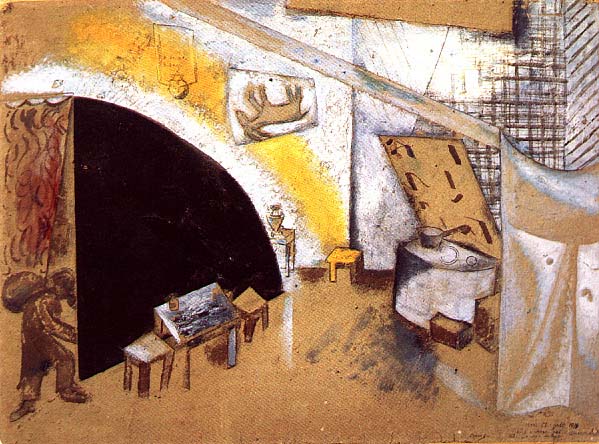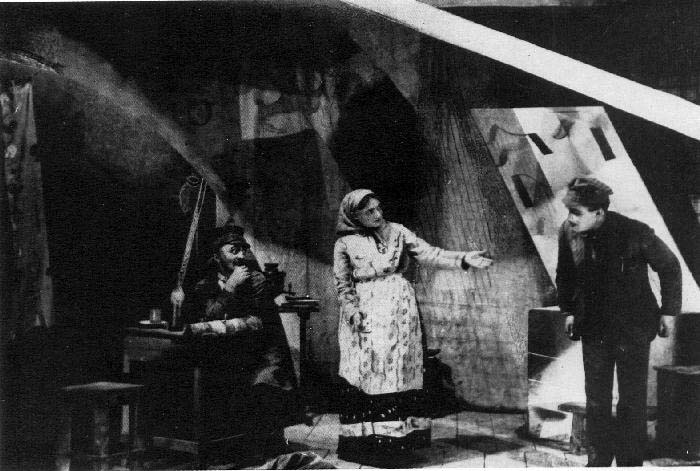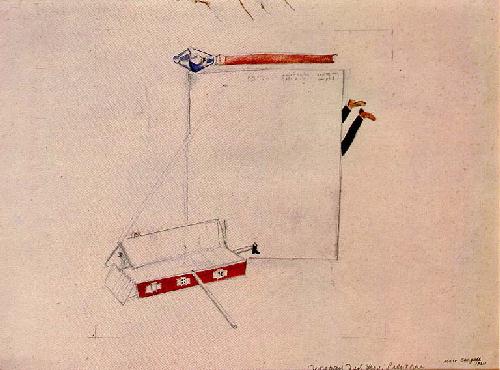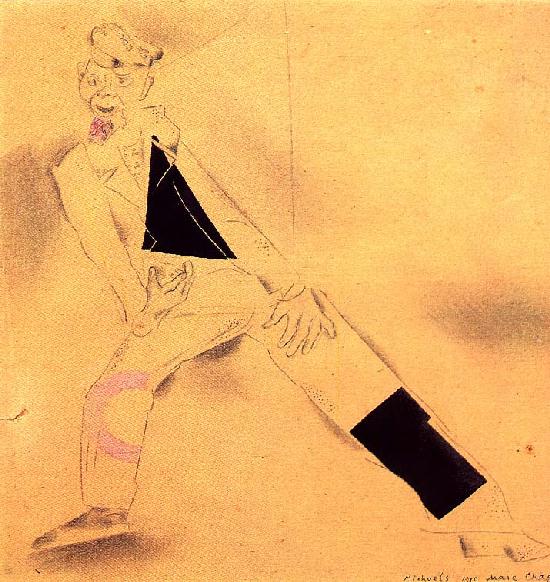
Set design for Mazl Tov

Scene from Mazl Tov

Set design for S'Align

Costume design for Mikhoels
RESEARCH
LIBRARY AND ARCHIVES
OF JEWISH THEATER
|
Set design for Mazl Tov |
Scene from Mazl Tov |
|
Set design for S'Align |
Costume design for Mikhoels |
The first performance of EKT in Moscow was the "Evening of Sholom-Aleihem" on January 1, 1921, based on one-act plays of the classic writer of Yiddish literature - Agentn (Agents) and Mazltov (Good luck). Marc Chagall designed the sets for the performance. Chagall also painted the rags that were brought to him to make costumes and covered the actors’ bodies and faces with colorful dots. As Abram Efros (the repertoire director of the theater) tells it:
"He obviously considered the spectator a fly, which would soar out of its chair, sit on Mikhoels’ hat and observe with the thousand tiny crystals of its fly’s eye what he, Chagall, had conjured up there ... On the day of the premiere, just before Mikhoels’ entrance on the stage, he clutched the actor’s shoulder and frenziedly thrust his brush at him as at mannequin, daubing dots on his costume and painting tiny birds and pigs no opera glass could observe on his visored cap, despite repeated, anxious summonses to the stage".
The actors thus perceived as moving Chagall’s figures. This coincided with Granovskii’s theory that, since the normal human state is silence, actors should pop up out of silence and go back to it. Efros wrote regarding the performance of "Evening of Sholom Aleikhem":
"The best places were those in which Granovskii executed his system of "dots" and the actors froze in mid-movement and gesture, from one moment to the next. The narrative line was turned into an assembly of dots".
This was contrary to the usual concept of theater as a 3-dimensional, dynamic art. But Chagall’s new vision of actors which provided another degree of animation in a two-and-half-dimensional space, would dominate the later theater’s productions. Chagall left EKT in 1921 due to Granovskii’s rather authoritarian style of leadership. (Excerpt from article by Benjamin Harshav in "Marc Chagall and Jewish Theater". New York, 1991).
A.Efros wrote about the influence of Chagall on the formation of the art of GOSET and on its individuality in the early years of the theater: "He [Chagall] did not set any conditions, but he also did not accept any directions ... Chagall forced us to pay the most expensive price for the Jewish national form of scenic expression ... he was the clear and indisputable victor, and, in the end, the young Yiddish theater had struggled because of this victory" (Abram Efros. Khudozhniki teatra Granovskogo. Kovcheg, no. 2. Moscow — Jerusalem, 1991, pp. 229 — 232). After all, Chagall left for the young Yiddish theater a difficult task of comprehension of his images and ideas and of embodiment of Chagall’s "two-and-half" dimensional vision to the multidimensional vision of the theater.